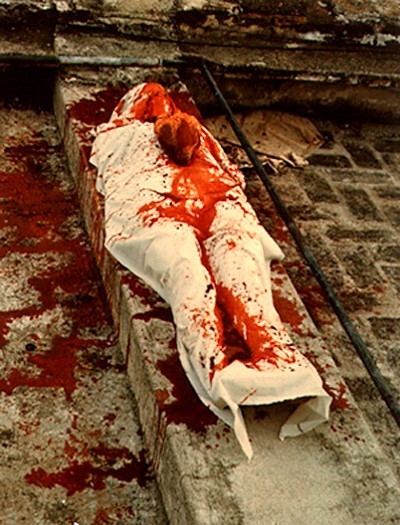Ana Mendieta
Ana Mendieta was born in Havana, Cuba, but was sent to the United States by her parents in order to avoid Fidel Castro’s regime at the time. She was relatively sheltered as a child, growing up in a middle-class family, and attended art school at the University of Iowa. Mendieta generally completed autobiographical work, and the main themes included identity, death, violence, belonging, and blood. What she completed was highly performative, and interacted with her audience. Overall, they encompassed the four basic elements of nature and a connection with the Earth, often created by using her body to become an extension of nature. Her works were packed with the emotions she felt in regards to being removed from her homeland as a child, and many of her pieces resonated with feminists then, as well as now.
Mendieta had a fascination with blood, and many of her works centered around it. Performed in Oaxaca, Mexico at Hotel Principal in 1973, Mutilated Body on Landscape is just one of many bloody shows put on by Mendieta. She lies beneath a white sheet that is covered with blood that follows the curves of her body, and a heart sits atop her chest. The image is violent, conveys death, and is a shock for the viewer. Catholicism and Aztec culture, the two major religions of Mexico, rely heavily on the idea of sacrifice of blood or energy, and Mendieta played directly to this audience, invoking the emotions of the culture and religion to achieve the greatest reaction. This is something she made possible on many occasions, and is one reason she was so accomplished.
